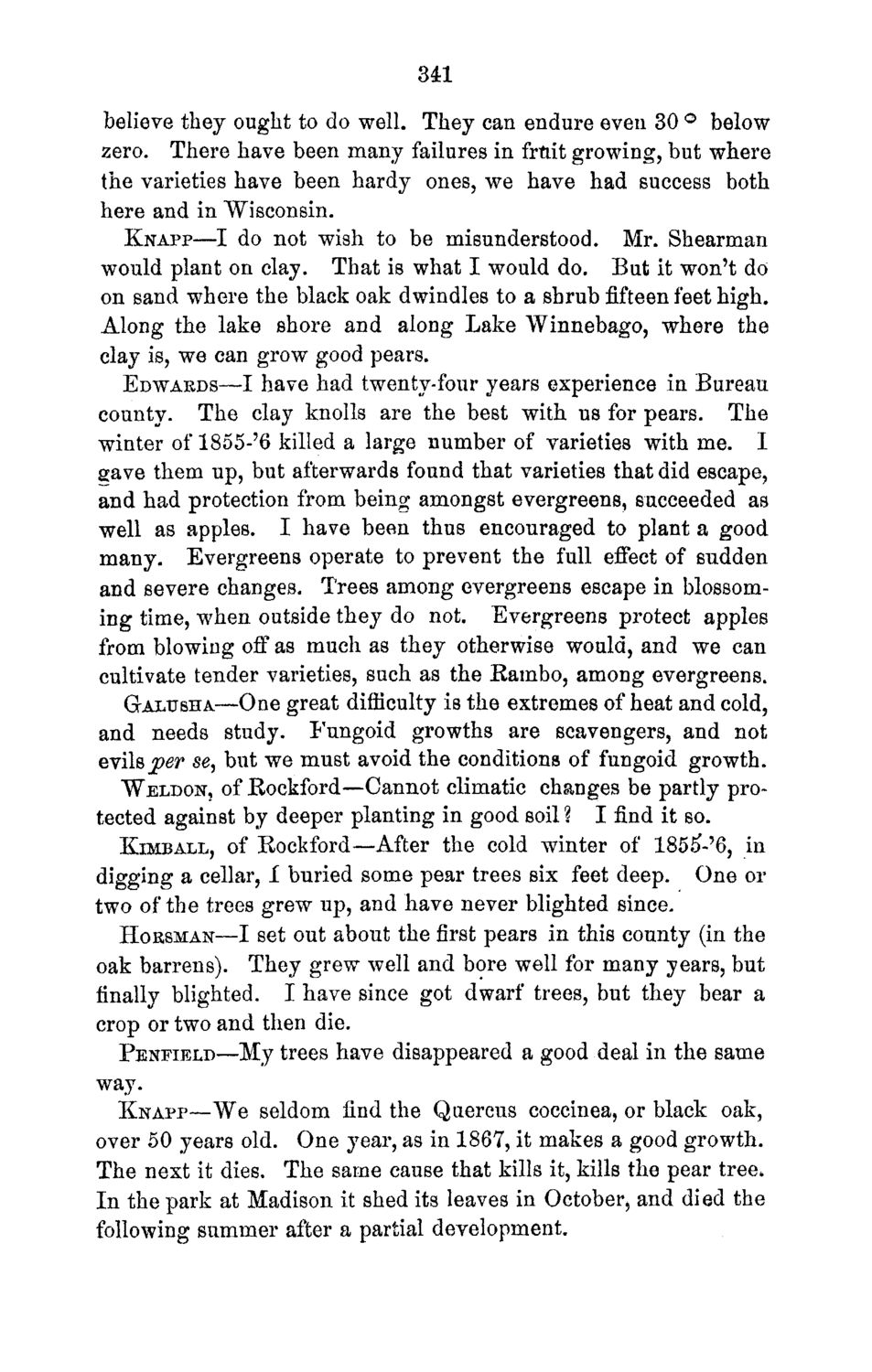| |
| |
Caption: Board of Trustees Minutes - 1870
This is a reduced-resolution page image for fast online browsing.

EXTRACTED TEXT FROM PAGE:
341 believe they ought to do well. They can endure even 30 ° below zero. There have been many failures in fruit growing, but where the varieties have been hardy ones, we have had success both here and in Wisconsin. KNAPP—I do not wish to be misunderstood. Mr. Shearman would plant on clay. That is what I would do. But it won't do on sand where the black oak dwindles to a shrub fifteen feet high. Along the lake shore and along Lake Winnebago, where the clay is, we can grow good pears. EDWARDS—I have had twenty-four years experience in Bureau county. The clay knolls are the best with us for pears. The winter of 1855-'6 killed a large number of varieties with me. I gave them up, but afterwards found that varieties that did escape, and had protection from being amongst evergreens, succeeded as well as apples. I have been thus encouraged to plant a good many. Evergreens operate to prevent the full effect of sudden and severe changes. Trees among evergreens escape in blossoming time, when outside they do not. Evergreens protect apples from blowing off as much as they otherwise would, and we can cultivate tender varieties, such as the Rambo, among evergreens. GALTJSHA—One great difficulty is the extremes of heat and cold, and needs study. Fungoid growths are scavengers, and not evils per se, but we must avoid the conditions of fungoid growth. WELDON, of Rockford—Cannot climatic changes be partly protected against by deeper planting in good soil ? I find it so. KIMBALL, of Rockford—After the cold winter of 185£>-'6, in digging a cellar, I buried some pear trees six feet deep. One or two of the trees grew up, and have never blighted since. HORSMAN—I set out about the first pears in this county (in the oak barrens). They grew well and bore well for many years, but finally blighted. I have since got dwarf trees, but they bear a crop or two and then die. PENFIELD—My trees have disappeared a good deal in the same way. KNAPP—We seldom find the Quercus coccinea, or black oak, over 50 years old. One year, as in 1867, it makes a good growth. The next it dies. The same cause that kills it, kills the pear tree* In the park at Madison it shed its leaves in October, and died the following summer after a partial development.
| |